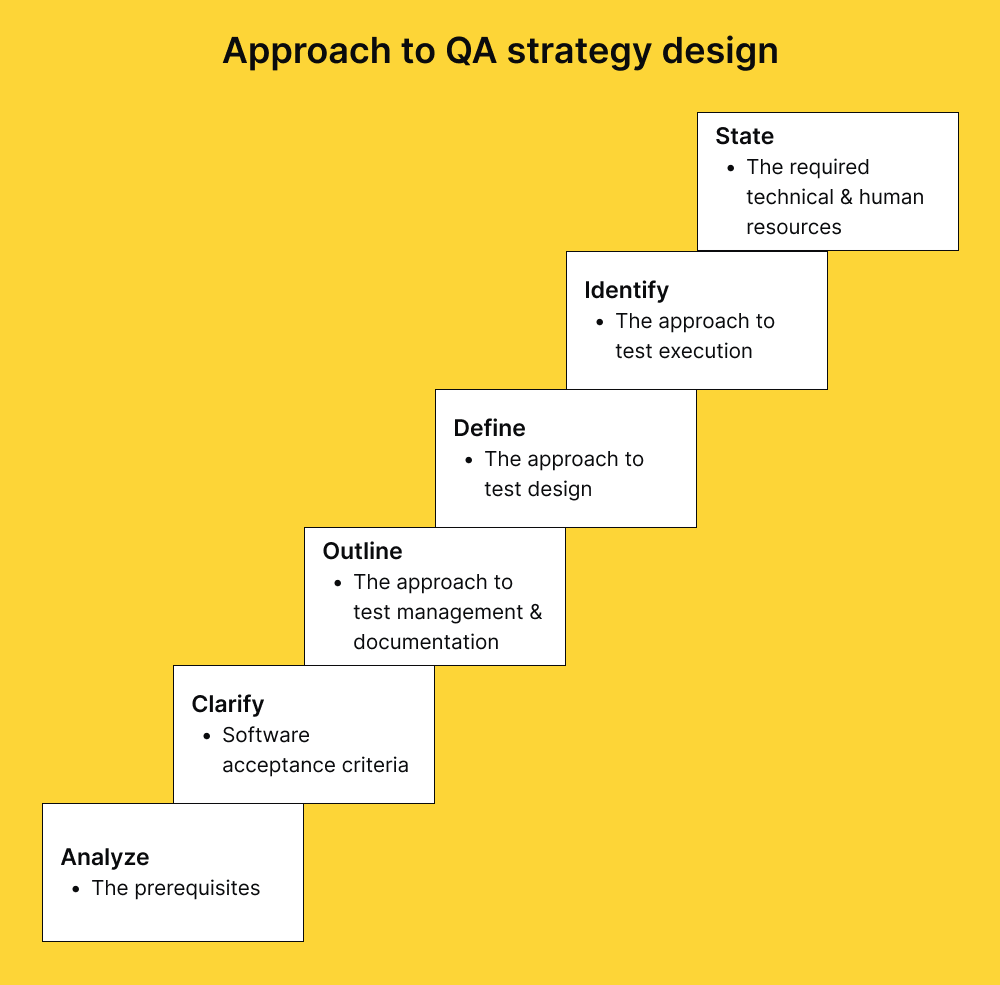12 best practices for an Agile QA process in 2024
Deadline pressure is mounting, and your development team is racing against the clock. Well, they are not alone. Balancing speed with quality in Agile QA is a widespread challenge. Navigating this issue, imagine your team delivering flawless software on schedule every time. This isn't a fantasy – it's the power of a well-implemented Agile QA process.
With benefits like increased agility (83%), financial gains (68%), and better work culture (61%), as reported by Organize Agile, mastering Agile QA is crucial. So, how can you handle the Agile QA process and make sure your team excels? In this post, we'll guide you through mastering Agile QA with practical tips and strategies, ensuring your team meets deadlines and delivers exceptional quality. Let's start!
Want to drive your global growth in local markets?
We can help you drive global growth, better accessibility and better product quality at every level.
What is a QA process and QA strategy?
A QA (Quality Assurance) process consists of a sequence of connected activities and steps to meet the goals set by a QA strategy. This process is carried out by a team typically comprising QA Engineers, a Test Lead, and a Test Manager. The main objective of the QA team is to deliver a product that is not only free from errors but also excels in quality, ensuring a superior user experience.
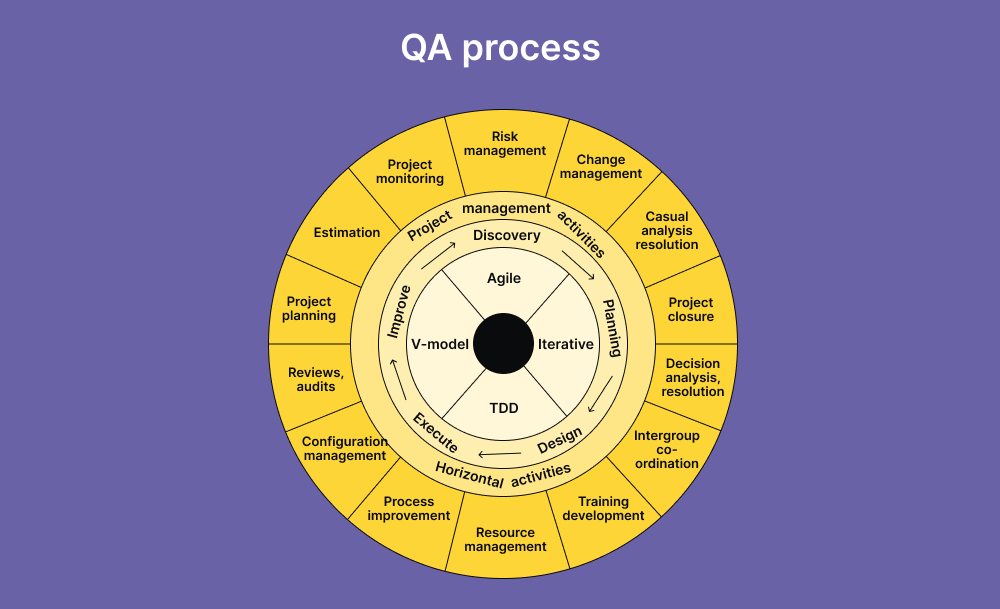
On the other hand, a QA strategy is about setting and achieving specific business targets, like expanding into new markets or reducing customer turnover. It's a comprehensive plan detailing the overarching goals and the path to achieve them.
Key takeaway:
While a QA strategy is akin to a long-term roadmap for achieving broad business objectives, the QA process is the day-to-day playbook. It involves specific actions, plans, and policies to carry out the strategy effectively.
How does the QA process differ from Quality Control?
Quality Control (QC) is the process of testing the final product to identify and fix problems before it is released. A well-executed QA process promotes team collaboration, shortens development time, and reduces costs. Although the stages may differ, the fundamental components of the QA process remain constant. Let's take a closer look at the main stages of the QA process.
What are the primary steps in the Quality Assurance (QA) process?
1. Analyze the requirements – “What do we need to test?”
QAs analyze project requirements, including functional and non-functional aspects, in the early stages of development. Early bug identification helps you minimize the costs compared to fixing issues during testing or production.
2. Plan the tests – “How will we test it?
Information from requirements analysis informs test planning, including testing strategy, scope, project budget, and deadlines. The test plan allocates responsibilities to individual testers to make this process easier for you.
3. Design the tests – “What do we need to do step by step?”
QA teams create test cases and checklists based on software requirements, including conditions, data, and steps to validate functionality. Staging environments are then prepared to ensure accurate testing conditions.
4. Execute tests and report defects – “Where are the bugs?”
In this stage, tests are conducted, including unit tests by developers and API/UI tests by QA. Identified bugs should be recorded in a defect-tracking system for efficient management.
5. Run Re-tests and Regression tests – “Is everything working alright?”
After bug resolution, QA re-tests functions to ensure thorough validation and performs regression tests to confirm fixes haven't impacted existing functionalities.
6. Run release tests – “What do the engineers need to fix the most/fastest?”
When developers notify about a release, the QA team identifies affected functionalities, creates new test suites, and conducts smoke tests. If successful, modified test suites are run, and a report is generated.
Test automation as a part of an Agile QA process
In Agile, it’s not about choosing one over the other but about leveraging the strengths of both automated and manual testing to achieve a high-quality product efficiently. The balance between the two should be based on the project's specific needs, the complexity of the features, and the stage of the development cycle.
Manual testing in Agile QA
- Manual testing is performed by human testers who can understand and interpret the nuances of the software in ways automated tests cannot.
- It is often more suitable for smaller projects where the testing scale may not justify the investment in automation.
- Manual testing is particularly effective at identifying user experience issues, complex interactions, and problems that automated tests may overlook.
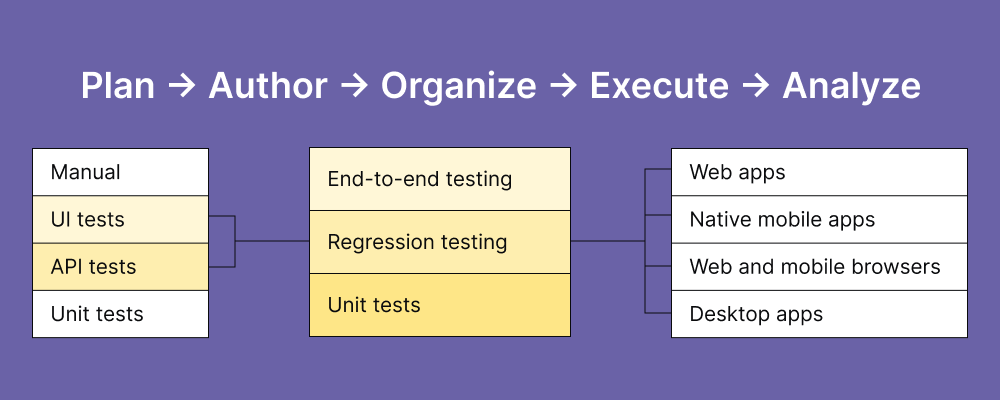
Test automation in Agile QA
- Test automation in Agile involves using tools and scripts to automatically execute test cases. It allows for the frequent and consistent execution of a large number of tests, which is essential in Agile methodologies due to their iterative nature and frequent changes to the codebase.
- Automated tests are ideal for regression testing, ensuring that new changes do not break existing functionality.
- Automation is also crucial for load and performance testing, which often requires simulating high volumes of traffic or processing, something not feasible with manual testing.
- Automated testing is especially beneficial for large projects due to the scale and complexity of the software. The ability to reuse test scripts and the faster execution of automated tests save significant time and resources.
- Automated testing enhances overall efficiency by allowing tests to be run more frequently and quickly, providing faster feedback to the development team.
Key takeway:
Neglecting to implement a QA process can lead to dissatisfied users, reputation damage, trust issues, sales impact, compatibility problems, distraction, and delays.
A well-organized QA process enhances product quality, customer satisfaction, and loyalty. It reduces costs by preventing defects early in development.
12 Best practices for an Agile QA process
1. Risk analysis
Risk analysis is an integral aspect of any QA process, involving identifying and evaluating potential risks and their impacts. This process helps organizations avoid and mitigate risks, recognizing that achieving 100% error-free applications is rare. A dedicated QA team should aim to eliminate or minimize critical errors by understanding all potential project outcomes and implementing preventive measures.
2. Test first and test often
The Agile model emphasizes the inclusion of QA throughout the project life cycle. QA technicians test the product within each sprint, ensuring that new features are implemented correctly and identifying any introduced issues promptly. Testing early and frequently leads to resource and time savings.
3. White-box vs. black-box
Different testing approaches, such as black-box and white-box testing, offer unique benefits. Black-box testing focuses on user perspectives, while white-box testing provides insight into system internals, enabling quicker testing within an Agile QA process. White-box testing supports collaboration between development and QA, aiding in predicting failure conditions, creating better test scenarios, and identifying potential security issues.
4. Automate if feasible
Automation enhances QA team efficiency by saving time on regression testing. Prioritizing and automating test cases carefully is crucial, as over-automation may lead to false breakdowns. Automation incurs initial costs but improves long-term efficiency and collaboration between development and QA teams.
5. Know your audience
Understanding the target audience aids in tailoring the QA process to meet user requirements. Aligning development and QA processes with user needs allows teams to create value-driven applications, saving time and resources.
6. Teamwork makes the dream work
A high-quality product is a result of a collaborative effort among professionals. While all project teams share accountability for quality, the primary responsibility lies with the QA team. In managing the Agile QA process, QA engineers act as super-sleuths, identifying obstacles, ensuring high-quality results, and building client trust, company reliability, and product performance.
7. Keep the goal in mind
Define clear objectives within the agile testing framework, ensuring a focused approach throughout multiple iterations in an agile sprint. Understanding the plan of action allows agile testers to deduce the application's functionality quickly and accurately.
8. Concentrate on a single functionality
Favor a focused approach in agile testing by concentrating on one feature at a time. Engage the entire agile team to align test case preparation with specific feature and functionality testing, reviewing and verifying test cases for correctness.
9. Estimate user stories
Consider testing effort requirements during the estimation of user stories. Engage early with user stories, concentrating on requisite agile testing, planning, and design to expedite the completion and acceptance of these stories.
10. Test user stories
Generate tests based on Acceptance Criteria (AC) and update them as user stories evolve. Design tests considering various components such as test data, conditions, environment, test scenarios, requirement mapping, and risk assessment.
11. Introduce Exploratory testing
Supplement other testing methods with exploratory testing to uncover defects within the code. Encourage knowledge exchange across agile teams by involving team members and stakeholders in testing.
12. Initiate session-based testing
Work in tandem with exploratory testing by exploring specific aspects of functionality within test sessions. Monitor each session for start and end times, member involvement, duration, and coverage of project features. Collect and consolidate findings for presentation to product owners, repeating the process to uncover defects and gain insights into the product.
Benefits of implementing best practices for an Agile QA process
Agile testing practices offer three main benefits for development:
1. Higher quality products
Agile testing catches defects early in development, combining continuous feedback and customer input to create top-notch products.
2. Fast delivery
Agile testing speeds up the development cycle and adapts to changing markets, ensuring products are delivered to customers within a reasonable timeframe.
3. Team cohesion
Agile testing emphasizes team collaboration, creating a productive work environment and boosting morale. This teamwork results in the delivery of high-value products.
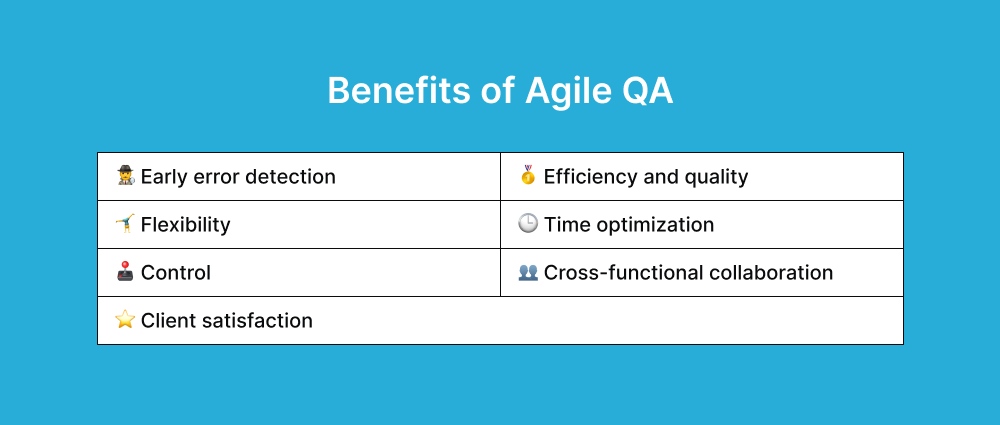
6 challenges and solutions in Agile QA process
When discussing the challenges and solutions in Agile QA (Quality Assurance), it's important to note that Agile QA focuses on continuous testing and integration within the development cycle. Here are some common challenges, solutions, and practical tips:
1st challenge: Integrating QA in Agile Sprints
Solution: Integrate QA engineers from the beginning of each sprint. Ensure they are part of planning meetings and daily stand-ups. This allows them to understand the scope and complexities of upcoming tasks, leading to better test planning and execution.
2nd challenge: Balancing speed and quality
Solution: Implement a mix of manual and automated testing. While automation speeds up the process, manual testing is vital for complex scenarios. Prioritize test cases based on risk and impact to focus on critical areas first.
3rd challenge: Changing requirements
Solution: Embrace flexibility in test plans. Agile is about adapting to change, so your test strategies should also be adaptable. Regularly review and update test cases to align with the latest requirements.
4th challenge: Ensuring effective communication
Solution: Foster open and continuous communication among developers, QA engineers, and stakeholders. Use tools like JIRA or Trello for transparent task tracking and encourage informal communication channels like Slack for quick updates.
5th challenge: Limited testing coverage
Solution: Use exploratory testing to supplement traditional testing methods. This allows testers to go beyond predefined test cases and uncover unexpected issues.
6th challenge: Keeping up with technology and tools
Solution: Invest in regular training and workshops for your QA team. Keep up-to-date with the latest Agile testing tools and technologies to evaluate their suitability for your projects.
Quality in software development: Beyond process to culture
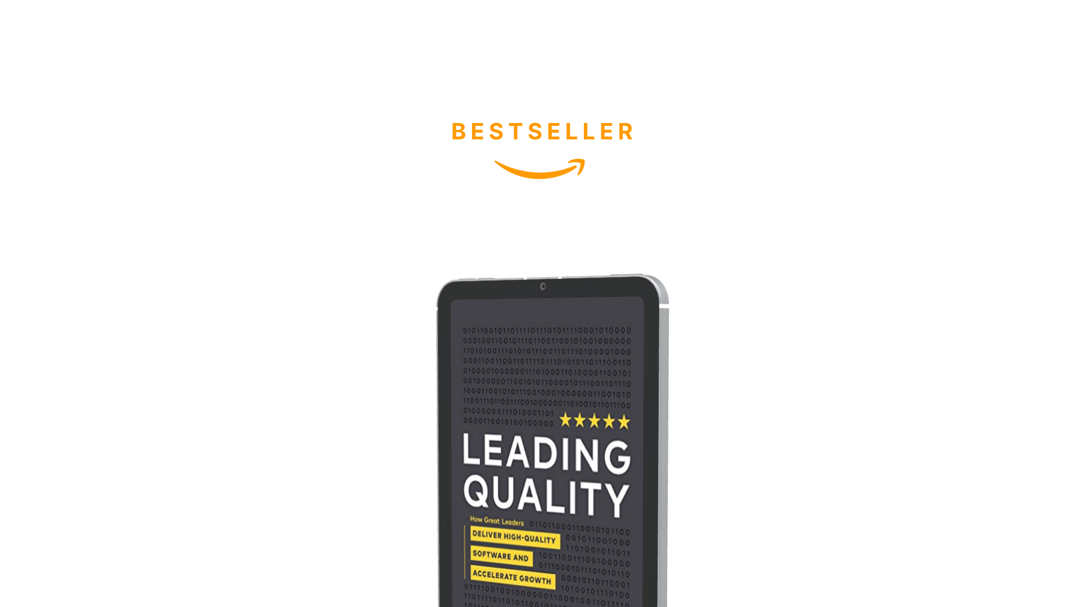
Quality in software development is not just a process; it is a culture that permeates every aspect of an organization. It involves a shared mindset, values, and behaviors that prioritize excellence and customer satisfaction. You can have all the processes you like; if you have a poorly motivated team or a team that doesn’t care about quality, you will produce poor-quality software.
Embracing 'Quality Narratives'
The book 'Leading Quality' delves into the concept of 'quality narratives,' highlighting the cultural dimensions of quality. Quality narratives are the amalgamation of stories, beliefs, and experiences that define an organization's approach to quality. They serve as a foundational framework that unites teams and stakeholders under a shared vision of high-quality software.
These narratives are more than just guidelines; they shape decision-making, spur ongoing improvement, and instill a sense of ownership and accountability in each team member. Cultivating a culture centered on quality empowers individuals to identify and solve issues actively, thereby elevating the overall standard of the software produced. This cultural shift extends beyond implementing processes and tools; it fosters collaboration, knowledge exchange, and an unwavering commitment to excellence.
Discover more insights on nurturing a quality-centric culture in our book 'Leading Quality,' available here.
We can help you simplify your QA process while keeping it aligned with your business goals
FAQ
What are the practices of QA in Agile methodology?
- Continuous testing: Regularly testing the product during the development cycle.
- Test automation: Implementing automated tests for efficiency and consistency.
- Test-driven development (TDD): Writing tests before developing the actual code.
- Behavior-driven development (BDD): Creating tests based on the application's expected behavior.
- Collaborative work: QA works closely with developers and stakeholders for better understanding and quick feedback.
- Adaptability: Quickly adapting testing strategies based on changing requirements.
How should QA process work in an agile team?
In an agile team, QA should:
- Be integrated within the team. QA is not a separate phase but is part of the entire development process.
- Participate in all agile ceremonies, including planning sessions, daily stand-ups, and retrospectives.
- Collaborate closely with developers to ensure understanding and quick feedback on issues.
- Focus on preventative measures like identifying potential problems early rather than just finding bugs.
- Be adaptive and adjust testing strategies as the project evolves.
How to improve testing quality in Agile?
To improve testing quality in Agile, consider the following:
- Automate repetitive and regression tests to save time and improve accuracy.
- Conduct regular code reviews to help identify issues early in the development cycle.
- Keep up-to-date with the latest testing tools and techniques.
- Quality should be everyone's responsibility, not just the QA team.
- Use metrics to track progress and identify what areas need improvement.
Keep learning
Testing in Agile: What Are The Benefits?
5 UserTesting alternatives to consider using in 2024
5 Testbirds Alternatives to Consider in 2024


